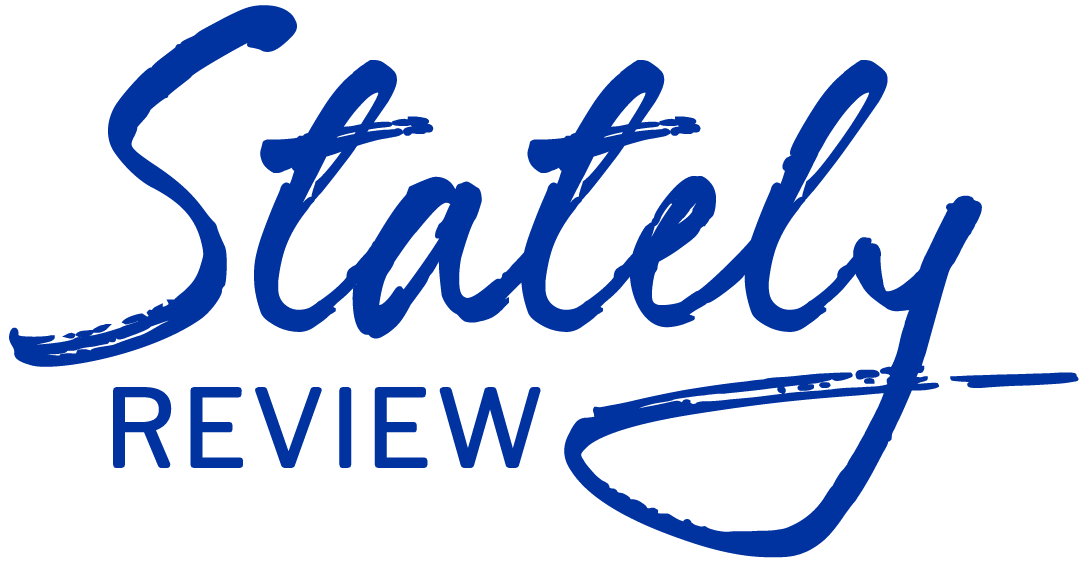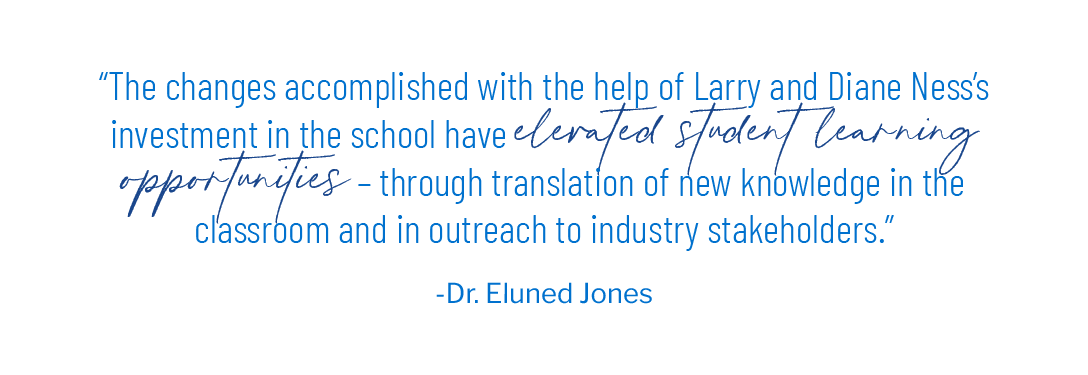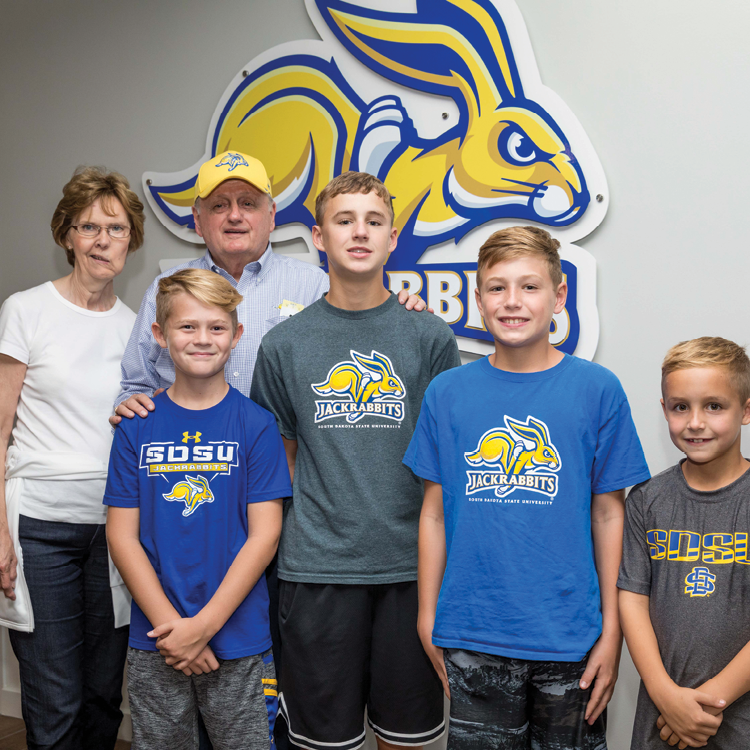Today, the SDSU Ness School of Management and Economics, with its home in Harding Hall, is a premier learning community filled with opportunity.
The foundation to position the Ness School for national accreditation came from a $5 million gift from Larry and Diane Ness in 2009. In 2021, the Yankton, SD, couple made an additional $5 million gift to endow the school’s director, scholarships, and a speaker series that will provide on-campus access to renowned experts from academia, policy, and industry thought leaders.
“National accreditation takes time and investment,” said Dr. Eluned Jones, SDSU professor and Endowed Director of the Ness School. “Along with teaching a high-quality curriculum, faculty members in all the business disciplines, as well as agricultural and applied economics, engage in the creation of new knowledge that significantly impacts the economy of South Dakota, the northern High Plains, and beyond,” she said.
Unlike other land grant universities, SDSU did not evolve organizationally in the mid-1900s with a separate business school. However, SDSU has a long history of teaching business-related courses.
The Ness gifts were inspired by a lifelong love for SDSU and the bold vision of President Emeritus David Chicoine, a 1969 graduate like Larry Ness. In 2009, Chicoine shared his vision of excellence for the School of Management and Economics with a task force of industry leaders. As board Chairman and CEO of First Dakota National Bank, Larry was among the stakeholders invited to provide input and guidance.
The task was large. “To ensure the highest standards and student success, national accreditation is important,” Chicoine said.
In the four decades following graduation, Larry helped two struggling South Dakota banks regain their footing and prosper under his leadership. He saw opportunity within Chicoine’s vision.
“Larry sat at the corner of the table and didn’t say much during the entire meeting,” Chicoine recalls. “Then, right before things wrapped up, he said, ‘Ladies and gentlemen, I see opportunity here.’”
The Ness commitment “was key to start the accreditation process,” Chicoine said. “I was able to carry this $5 million commitment with me when I went to the Board of Regents to request accreditation approval. It showed that our university had stakeholder buy-in. It demonstrated SDSU had the necessary financial foundation in place.”
Dr. Jones was the first director of the Ness School, starting in 2012. The work to hire faculty members in finance, accounting, marketing, management, and entrepreneurship with strong research credentials has been a big part of the effort to better serve students and meet South Dakota’s evolving workforce needs.
“The changes accomplished with the help of Larry and Diane Ness’s investment in the school have elevated student learning opportunities – through translation of new knowledge in the classroom and in outreach to industry stakeholders,” Jones said.
The transformation of the school is increasingly being recognized on a national level; today, the school is in the late stages of accreditation from the Association to Advance Collegiate Schools of Business (AACSB).
Jackrabbits from all majors can learn business finance, agricultural finance, investments, and commodity futures and options trading in the First Dakota National Bank e-Trading Lab, which was enabled by one of the gifts influenced by Larry Ness.
“The trading lab changed how faculty taught and how students perceived the former economics department. The tickers and displays of financial and commodity market information sent a signal, particularly once we moved to Harding Hall,” Jones said.
“SDSU has the faculties of economics, agricultural economics, and all of the business disciplines in one academic unit, and the land grant missions of research and extension,” Jones said. “The synergies enabled by the Ness School’s collaborative structure promotes greater flexibility for students to learn in a multi-disciplinary business and applied economics ‘community’, and for faculty members to engage in solutions-oriented research and outreach.”




